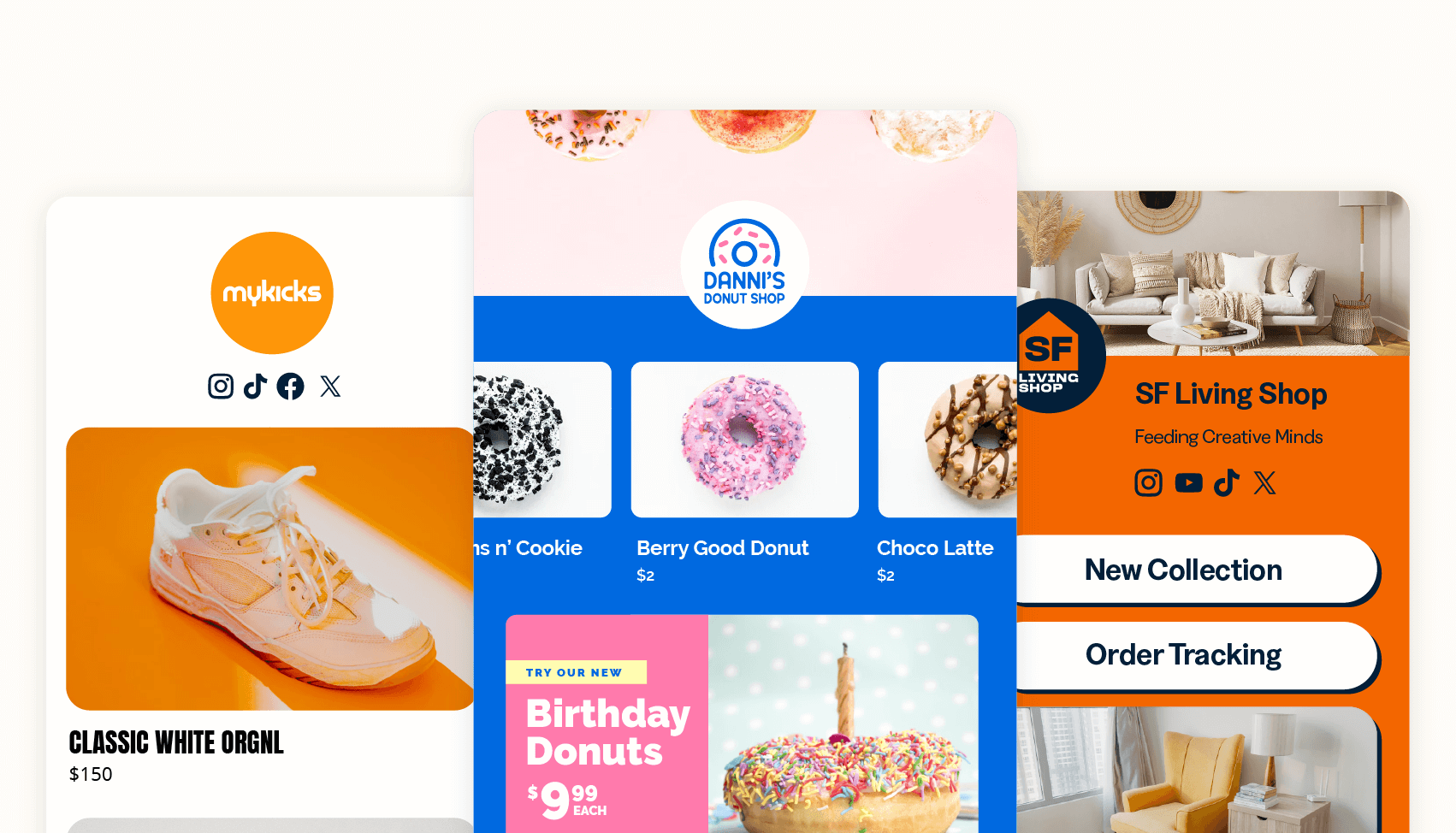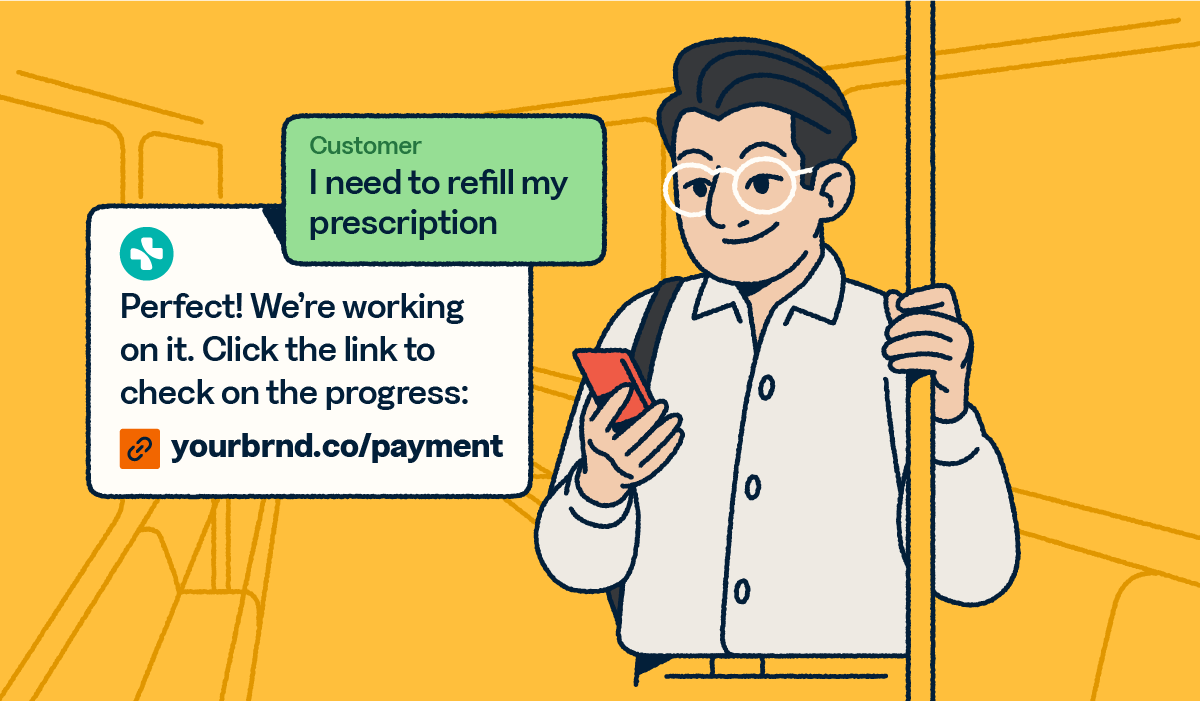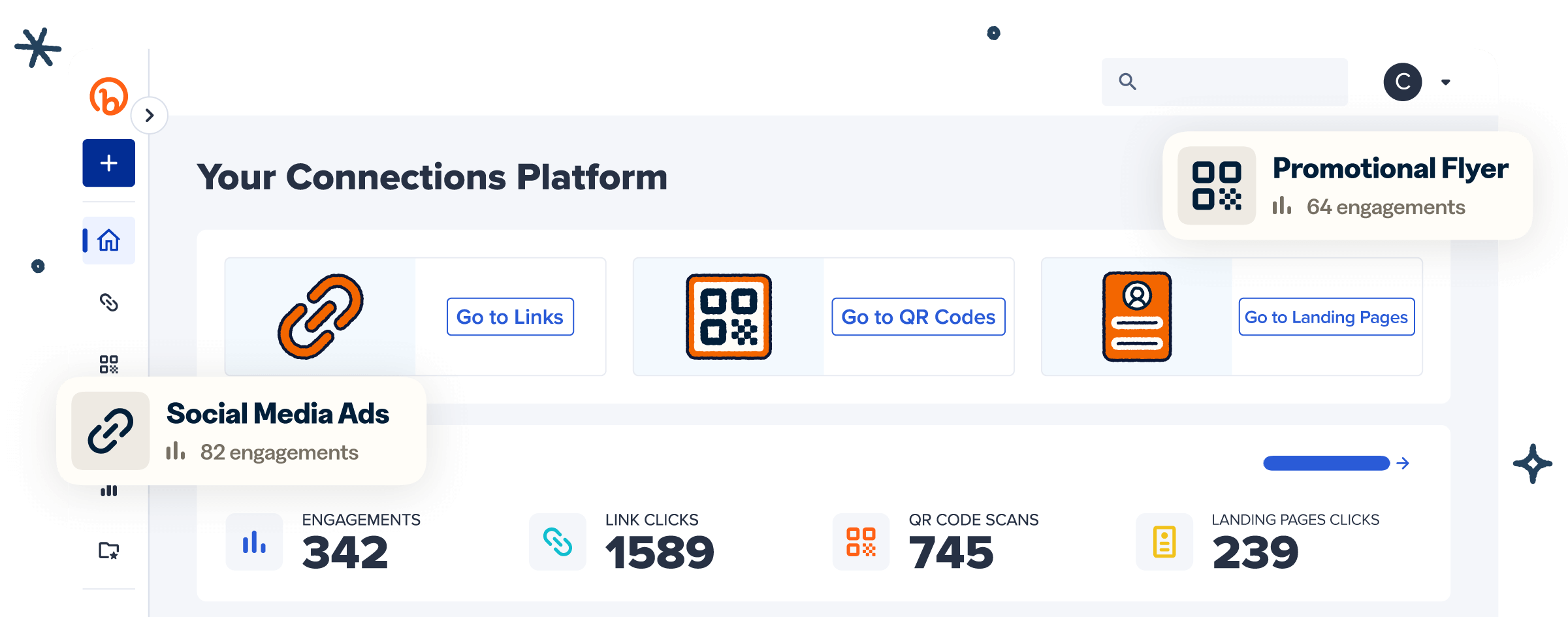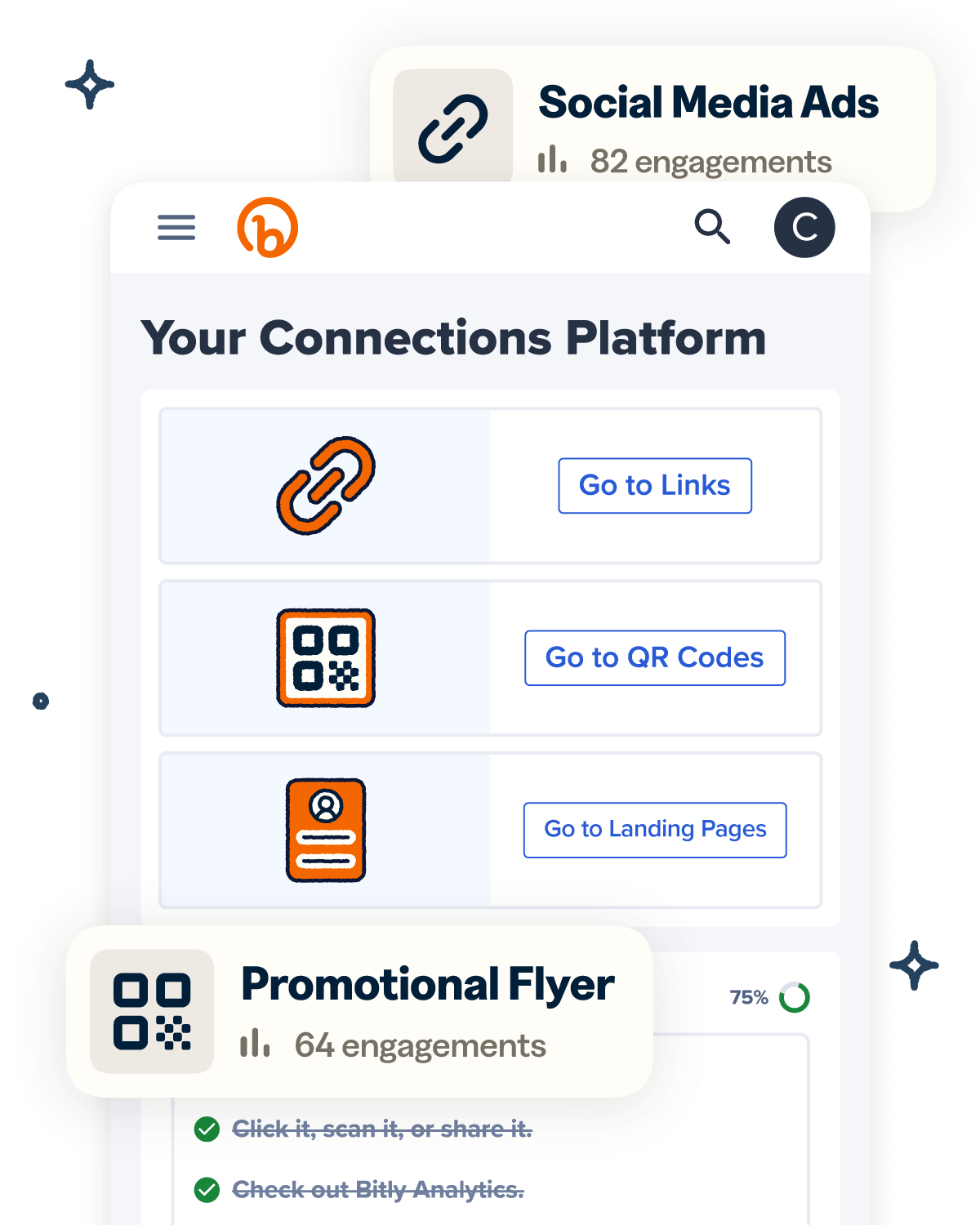If you’ve made a purchase from your phone in the past year, you’re in good company—mobile ecommerce now makes up 60% of all ecommerce. Shoppers not only buy via mobile browsers and apps, but they also go on an entire customer journey via smartphones that never leave their side.
Brands that aren’t building and refining their 2025 mobile marketing strategy are missing out on one of the best opportunities to reach their audience in the ways they prefer to shop, buy, and engage today. Ready to make every mobile interaction with your audience the best it can be? This guide will walk you through what you need to know to start or strengthen your mobile marketing strategy this year.
Mobile marketing 101: Getting started
Mobile marketing is the branch of marketing strategy that focuses on tactics designed to reach and engage customers from their mobile devices. This includes:
- Mobile-optimized websites and landing pages
- Mobile apps
- QR Codes
- Push notifications
- SMS campaigns
- Location-based marketing
Why embrace mobile marketing?
Mobile marketing tactics have different technical specifications, layouts, security requirements, and user preferences than other interfaces. That’s why your mobile strategy calls for dedicated resources and planning beyond physical or non-mobile digital touchpoints.
Marketers around the world have recognized the power of mobile-specific channels. For instance, 2024 predictions called for mobile ad spending to reach $402 billion. This aligns with how consumers shop, not only online but also in physical retail: eMarketer found that 74% of consumers use retailer apps while they shop in stores. Naturally, mobile revenue is big business—global mobile ecommerce reached $2.2 trillion in 2023 and keeps climbing.
Consumer preferences for mobile channels and tactics continue to grow. That’s why brands can’t afford to downplay their existing and potential mobile touchpoints. Focused, mobile-friendly (or better yet, mobile-first) marketing lets brands across industries:
- Increase traffic, clicks, and opens
- Deepen loyalty and repeat purchases
- Send effective cross-channel and omnichannel campaigns
- Embrace how customers already shop and engage
Don’t leave mobile marketing as an afterthought for your brand. Treat it as a focal point of your strategy for deeper connections at every stage of the customer journey.
4 core mobile marketing components
We’ve seen why mobile marketing matters—but how do you take stock of your current tactics and start optimizing? Here are four of the most important elements of a mobile marketing strategy to implement and improve.
1. Mobile-friendly web design
The most foundational piece of your mobile marketing is ensuring that your website is optimized for mobile visitors. If you’ve only built your website with desktop users in mind, chances are that those visiting your URL from their mobile phones will encounter clunky formatting, slow load times, or broken buttons. Instead, you should design or edit your site to be mobile-friendly—highly readable and easy to navigate from a smartphone—and responsive, which means it automatically adjusts to the size of the user’s screen.
Any traffic that comes via mobile app, text message, or QR Code will likely visit your site from a mobile browser, so mobile-friendly web design is the building block for the rest of your strategy. Get your website ready to engage and convert these customers with an experience that’s built with smartphones in mind. (And when you create specialized landing pages for limited-time offers or targeted campaigns, make sure they’re built with mobile in mind, too.)
Not sure if your brand’s site is built for mobile? For a start, visit from your own phone and see if you encounter any issues or errors. Then, head to your website builder—most have built-in features to help you ensure responsiveness, view and edit your site from a mobile perspective, and add mobile-only elements.

2. SMS marketing campaigns
With high open and engagement rates, SMS marketing is an ideal channel to reach loyal, connected customers with exclusive offers, interactive content, and order updates. Text messages need to be short and impactful to truly pack a punch, and brands should be strategic about frequency to avoid over communicating and unsubscribes.
SMS marketing is a great way to get consumers to take quick action with a branded short link. Most consumers are wary of clicking an unknown link in their text inbox, so send a link with your domain that they recognize and trust to spark action.
3. Mobile apps and push notifications
Mobile apps let brands offer robust functionality to customers, from loyalty programs to user-friendly support to in-app shopping interfaces. Not only does a mobile app download mean your brand takes up space on their smartphone’s home screen, but it also creates a new channel to reach out to consumers: push notifications. Notify consumers in real time of flash sales, limited-time freebies, product releases, and sneak previews.
Best of all, mobile apps are built specifically for mobile users, so every aspect of the experience is optimized for browsing and buying from a smartphone.
Pro tip: Do you have a mobile app and want to drive more downloads? Try mobile deep linking. When you deep link from a social, email, or text campaign, the destination is a page within your app. If a visitor doesn’t have your app, the link will take them to the app store to encourage them to download it. If they do have the app, they’ll head straight to the destination.
4. QR Codes
Not all elements of mobile marketing start on a smartphone screen. QR Codes are an ideal mobile marketing tactic to help you draw consumer engagement from an in-person experience—a store shelf, physical ad, or live event—to a mobile interaction. Customers can quickly and easily scan your QR Code using their smartphone’s camera to head to the mobile-optimized web experience we already discussed.
QR Codes let you engage your audience with a new experience online and increase the likelihood they’ll keep connecting with you beyond the current moment. Share an instructional overview video, coupon, additional online options, or sustainability practices on your website or a targeted landing page.
Plus, QR Codes offer valuable tracking capabilities. Instead of just sending someone to your homepage URL, link the Code to a URL with UTM parameters or a custom landing page so you can pinpoint which offers are resonating with your audience.

Know your mobile marketing metrics
Measurement for your mobile marketing efforts isn’t drastically different from measuring your other strategies. But there is some nuance in where the numbers come from and how to keep track of them. Here are a few of the numbers you should keep in mind and optimize for:
- Click-through rates: This includes clicks from your email or SMS campaigns to your mobile app or website.
- Conversion rates: This includes converting to sign up for text messages or download your mobile app and conversion within your mobile app or website to make a purchase.
- Customer retention: This includes continued customer engagement on mobile channels like keeping your app downloaded and staying subscribed to texts, as well as making multiple mobile purchases.
To track these metrics over time, make sure you have the right analytics tools or platforms in your tech stack. Look for:
- Mobile measurement partners that can help you attribute mobile app marketing campaigns and engagement (like AppsFlyer and Adjust)
- Analytics dashboards to measure individual campaigns by performance, location, and referring channels (like Bitly Analytics, which measures QR Code, short link, and mobile landing page performance)
- Advanced SMS tracking beyond open rates, including delivery reports and location-based tracking (SMS marketing platforms like Klaviyo and Attentive offer texting analytics)
When you track your mobile marketing performance over time, you can identify which tactics, messaging, and offers most appeal to your audience. Then, you can apply your learnings to future campaigns and conduct A/B tests to further improve your metrics and mobile strategy.
4 standout mobile marketing best practices
How can you go the extra mile to drive engagement and retention with your audience from their smartphones? Keep these best practices in mind to make your mobile presence and campaigns not only functional but a strategic aspect of your marketing strategy.
1. Consider the mobile experience on every channel
Long before they buy, your customers are likely encountering your brand from their phones. This means you should take a mobile-friendly approach no matter where you’re marketing, from organic social media to email campaigns.
Be wary of large blocks of text in your social posts and emails, which can be hard to read on a small screen. Aim for brief but impactful copy that customers can quickly scan to get the gist of your brand personality and your offer. Stay in tune with the kind of content audiences like to consume on their phones and invest in formats like short-form videos that are easy to digest and scroll through.
2. Optimize for cross-channel touchpoints
Prioritize your audience’s experience not just while they’re browsing on their phones but also when they’re well-positioned to start engaging with you on mobile. Map out the customer journey to identify moments when they might be willing to reach out to you or interact in a new way:
- When they’re looking at your product on a shelf and want to learn more, share a short link to check out step-by-step videos or production details.
- When a product is out of stock, invite them to download your mobile app to place an online order instead with a simple QR Code.
- When they take your product home and need to make a return, contact support, or subscribe for monthly deliveries, link them to a customized landing page with all these options in one place.
Think critically about your audience’s behavior and preferences, then give them simple, easy, and targeted touchpoints to connect with you on mobile—and keep them engaged with helpful mobile experiences.
3. Embrace two-way communication
From the earliest iterations of the telephone (think Alexander Graham Bell-early!), the core benefit has always been its ability to build a bridge between two people. So why treat mobile marketing as a one-way channel to deliver messaging and promotions to your customers? Instead, embrace the back-and-forth nature of mobile tactics to engage customers in convenient, customized ways.
Conversational commerce has turned online shopping on its head by inviting customers to interact via chatbots, messaging apps, and SMS. Consider adding customer channels like:
- Click-to-message ads. Outside of your existing ad destinations, try sending some of your ads directly to messaging apps like WhatsApp or Instagram Messenger where they can engage with an AI assistant or someone from your team from their phone.
- Text-to-pay. Use mobile messaging to give your customers a secure, convenient way to pay via their mobile device.
- Text-to-buy. Invite your audience to make a purchase from a text conversation by simply replying with a keyword. Concierge shopping right from your smartphone? Yes please!

4. Lean on location, location, location
No part of your marketing strategy should be one-size-fits all—least of all your mobile marketing. Rely on location-based data to target your campaigns and drive sales and loyalty.
Encourage mobile app users to turn on their location so you can learn about which of your stores are nearest to them, share local events and deals, or which shipping options are best for them. Head to your Bitly Analytics dashboard to see where in the world most of your short link clicks and QR Code scans come from—and where some of your most loyal fans are located. Then, run geo-targeted campaigns for those regions or invest more of your mobile ad budget there.
Stronger connection through mobile marketing
Most of your audience spends hours per day on their smartphone, connecting with friends and family, consuming content, and looking for their next favorite product. To reach them where they’re already spending their time and attention, build your marketing strategy for an increasingly mobile-focused world. Don’t just optimize your website for mobile; create mobile-friendly, easy-to-navigate content.
Go beyond sending an order update text; use SMS to deliver personalized, above-and-beyond offers.
Revenue, retention, and customer engagement are calling—and better mobile marketing is the answer. Let Bitly help you reach your audience with an entire suite of trackable, convenient tools and touchpoints to connect from anywhere. The possibitlyties are endless.




